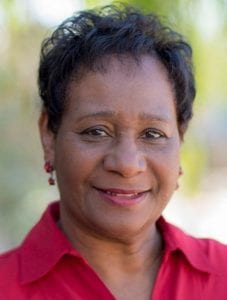The need to address diversity, equity, and inclusion (DEI) extends to the materials we use to teach students. For authors, it can be tempting to relegate DEI discussions to feature boxes or individual chapters in a textbook—“add-on” features that may unintentionally convey exceptionalism. DEI should be as much a part of a manuscript as proper sentence structure and organization; it should exist within and throughout the narrative and encompass how the reader experiences the text, including visuals and accessibility. It is our responsibility to accurately reflect our diverse world.
Confronting the anxiety of academic writing: Reconceptualizing writing to clarify your ideas
The first article in this series, based on Rachael Cayley’s October 19, 2022, TAA webinar, “Confronting the Anxiety of Academic Writing,” considered the importance of taking academic writing anxiety seriously. The second discussed Cayley’s suggestions for tackling the intellectual and practical difficulties associated with writing.
In this third article, we delve into the first of Cayley’s three principles for reconceptualizing writing: using writing to clarify your own thinking. In subsequent posts, will discuss the other two principles: committing to extensive revision and understanding the needs of the reader.
Join us for the 3/16 TAA Webinar: Taxes & Authors: What You Should Know in 2023
While it is understandable that most writers would prefer to concentrate their time on their writing, writing is a business and you need to make sure you’re taking care of all of the tax deductions that you should be.
Join us for this one-hour webinar on March 16 at 2 p.m. ET, “Taxes & Authors: What You Should Know in 2023“, presented by Robert M. Pesce, a partner with Marcum LLP.
Textbook publishing contracts in an evolving publishing world
Over the past several years major publishers have been moving away from physical or electronic books into online learning platforms and courseware, and from straight sales of standalone books to bundles, custom products and subscriptions. Traditional publishing contracts were developed at a time when a book was a discrete unit, sales could easily be tracked in those units, and revisions occurred on a predictable cycle. Publishers are trying in various ways to update and adapt their contracts to the new textbook landscape. In her 2023 TAA Conference session, presenter Brenda Ulrich, an attorney at Archstone Law Group, will explore the ways in which the contracts are changing, and what the implications are for authors.
The prelude: Preparing to write a scholarly textbook
Many think about writing a scholarly textbook years before actually picking up the pen to do so. That prelude is like musicians tuning up before a performance. It is an investment of time that is as critical to finishing a book as to beginning it. For a writer, the prelude is a time to organize notes and references. To draft and redraft a table of contents. To organize notes. To connect with potential editors. To investigate potential audiences and find colleagues who would consider adapting it in their teaching. The prelude contributes to the ease with which you can write the book and lays the foundation that there is an audience for it.
2023 TAA Council Elections – Cast Your Vote
Six candidates are running for four open positions on the TAA Council, the association’s governing board. Terms begin July 1, 2023.
Members received an email with a link to the ballot on February 21. To be eligible to vote, individuals must be members in good standing. If you are a TAA member and cannot vote electronically, contact Kim Pawlak at Kim.Pawlak@TAAonline.net or (507) 459-1363 to request a paper ballot. The deadline for voting is Friday, March 17.

“I would like to continue my support of TAA with service as the next Vice President/President-Elect, as this organization continues to invite new and ongoing members of the textbook and academic authors community to join with us for this mutually beneficial and rewarding purpose.” – Dione Taylor, Running for Vice President/President-Elect






